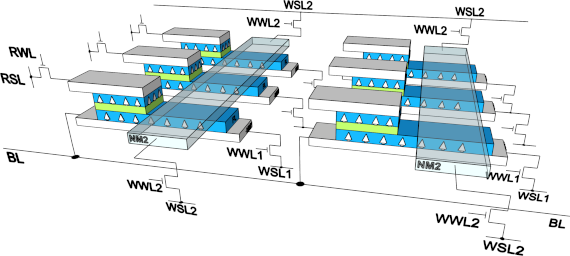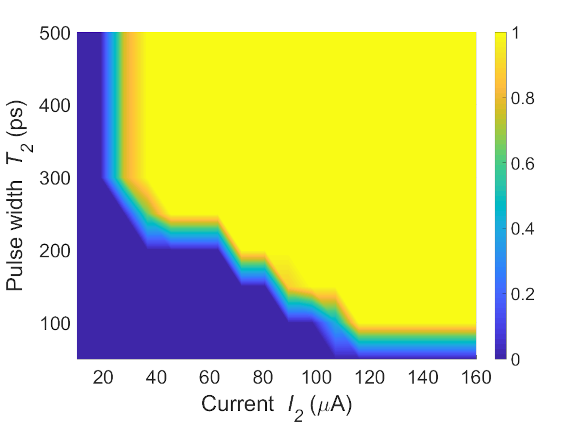 |
|
||||
BiographyRoberto Lacerda studied electrical engineering at the University of Campinas (Unicamp), where he received a Bachelor degree in 2004 and a Master degree in 2006. He joined the Institute for Microelectronics in October 2006, where he received his doctoral degree in 2010 and worked as a post-doctoral researcher until 2013 focused on modeling and simulation of electromigration and reliability issues in interconnects of integrated circuits. From 2014 to 2018 he was Assistant Professor at the Faculty of Electrical and Computer Engineering of Unicamp. In October 2018 he rejoined the Institute for Microelectronics as a research scientist on non-volatile magnetic memory devices. |
|||||
Spin-orbit Switching for an Array of Perpendicular MRAM Cells
A field-free spin-orbit torque (SOT) switching scheme based on a purely electrical control of the magnetization reversal of a perpendicularly magnetized free layer (FL) was previously proposed. In order to perform switching, the current densities of both pulses were initially larger than the critical value for SOT switching. This not only yields a fairly high power consumption, but also complicates the integration of the cell in a memory array, because the additional heavy metal wire (NM2) conducting such a large current cannot be connected to several cells in a row, as shown in Fig. 1. The SOT generated by the large second current pulse can drive the magnetization of the neighboring, non-selected cells to the FL plane. In this case, not only is the stored information temporarily disturbed, but the probability of an undesired bit flip also increases.
In order to mitigate these issues, the second current has to be reduced. Fig. 2 shows a contour map of the switching probability as a function of the second current pulse amplitude and duration. It shows that the current amplitude can be significantly reduced — the minimum current (~30μA) is about four times lower than the nominal critical current (120μA) — without affecting the writing performance of the magnetoresistive random access memory (MRAM) cell. That is, the switching remains deterministic (100% switching probability) for sub-ns pulse widths.
For a second current smaller than the critical value, the corresponding SOT is weak, and the non-selected cells should not be affected. This is confirmed by the magnetization dynamics shown in Fig. 3. Here, the cell is not selected by the first pulse, and only the second current pulse is applied. The weak SOT deviates the magnetization from the initial out-of-plane orientation only slightly. This proves that the non-selected cells remain undisturbed, and an undesired bit flip is unlikely. In this way, several cells can be integrated in a crossbar architecture, as shown in Fig. 1, which requires a smaller number of access transistors per cell, decreases the wiring overhead, and reduces the total cell area. In addition, the scheme becomes more efficient because the lower current leads to a reduced writing power for the same switching performance.

Fig. 1: Crossbar array of SOT-MRAM cells based on a two-current pulse switching scheme.

Fig. 2: Switching probability map as a function of the second pulse current and width.

Fig. 3: Magnetization dynamics of a non-selected cell, when only a reduced second current (lower than the critical SOT current) is applied.


